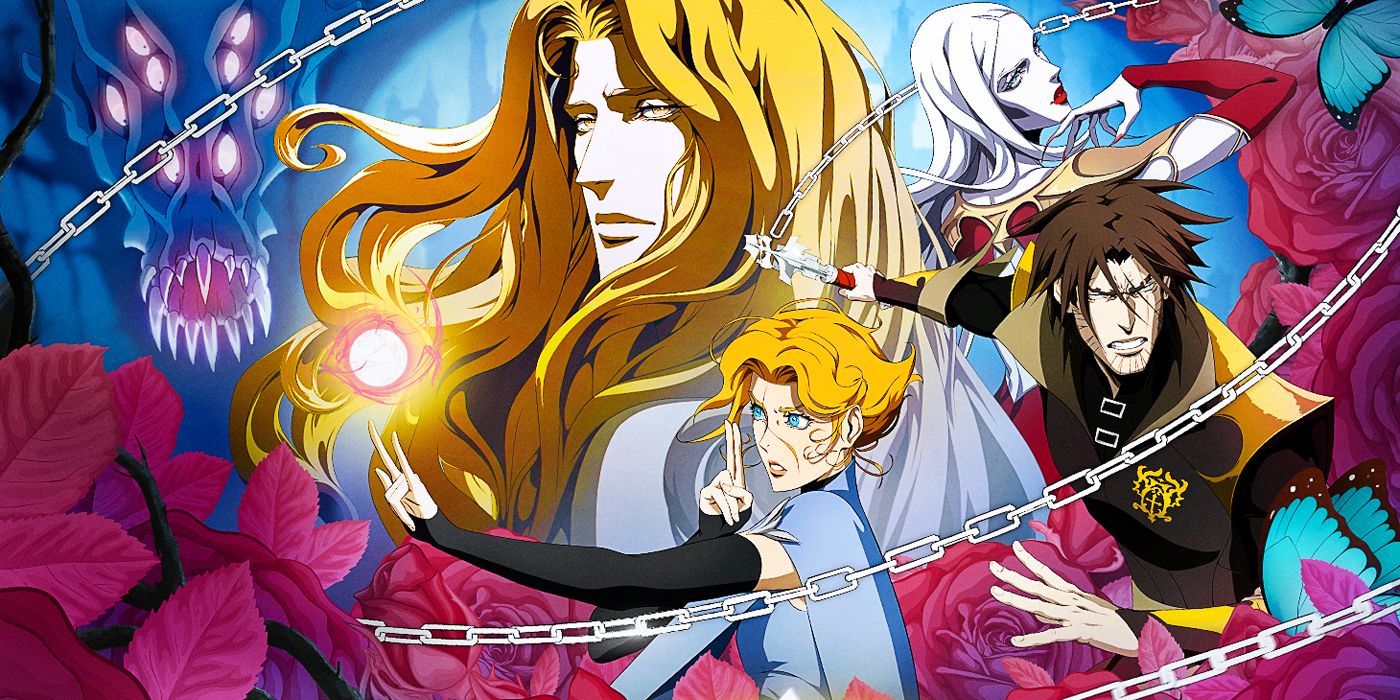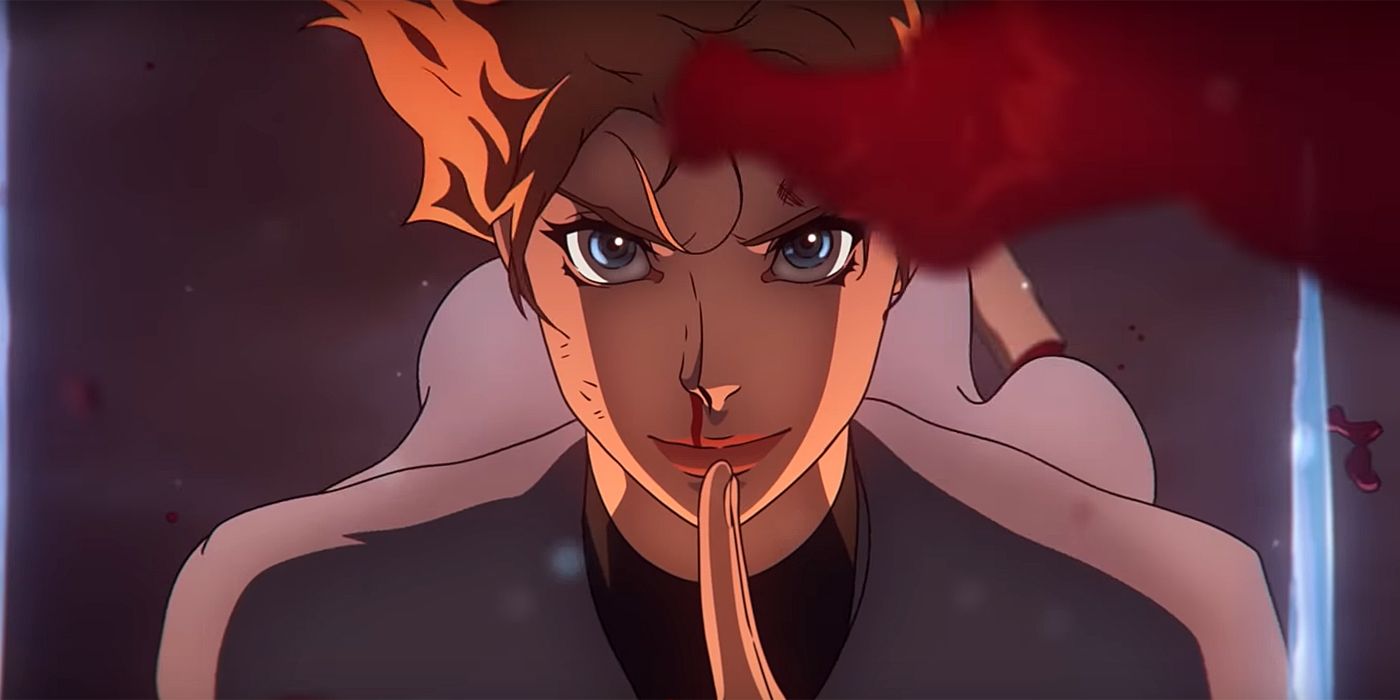Over a year since new episodes hit Netflix, Castlevania has returned for a third season continuing the acclaimed animated video-game adaptation. Boasting a higher episode count and production budget than the preceding two seasons, the new season ventures into fresh territory after the previous two loosely adapted the story of the 1989 video game Castlevania III: Dracula's Curse. In doing so, series writer and executive producer Warren Ellis goes darker, deeper and weirder than the earlier seasons, while still delivering the bloody thrills that have made the animated show one of the most popular original series on Netflix.
Taking place a couple months after the Season 2 finale and defeat of Dracula, Trevor Belmont and Sypha Belnades have left to explore the Transylvanian countryside while Dracula's rebellious dhampir son Alucard resides alone in his father's castle. While the vampiric lord may be dead, however, the surrounding areas remain in bloody chaos, with stray monsters from Dracula's army still on the loose. Meanwhile, Dracula's former associates have their own plans to take advantage of the power vacuum, either allying together or operating alone.
Running at ten episodes, as opposed to the second season's eight or the first season's four, the series is able to take advantage of the additional real estate to proceed at a more deliberate pace than previous seasons. Virtually every episode still contains at least one action set piece to keep viewers' attention -- with the first skirmish particularly unflinching in its violence to remind viewers that this cartoon isn't for kids -- but there is a slower, more philosophical undercurrent running through the season. There is a surprising amount of introspection and debate, and the main characters appear more haunted than ever as the battle for Transylvania intensifies.
Fortunately, the more methodical pacing and divergent storylines following different characters never make it feel like the series doesn't know where it's going or cause it to wander aimlessly in its own narrative. Season 3 asks its audience for a little more patience than they may be accustomed to, but it provides enough thrills to keep them invested in the proceedings. And the cast of characters continues to expand, with returning vocal talent Richard Armitage, Alejandra Reynoso, James Callis and Theo James joined by newcomers including Bill Nighy, Rila Fukushima, Jason Isaacs, Jessica Brown Findlay and more.
While the star-studded voice cast does effective work bringing their respective characters to life, the season's biggest weakness is perhaps how smugly self-aware it can be at times. The first two seasons of Castlevania certainly delivered the self-assured sass and sarcasm in full, but it feels dialed up in Season 3, at times to the point of obtrusiveness. Some jokes definitely land, and being able to laugh at one's self is rarely ever a bad thing, but when the jokes fizzle or feel out of place, they feel especially glaring.
Castlevania Season 3 is more ambitious, charting new territory for the animated series' ongoing narrative while taking the time to really examine its lead characters as it largely places them on different paths. While the bloody action and monstrous behemoths are still a constant presence, the video-game adaptation isn't afraid to take more storytelling risks as it forges beyond the original source material. While this self-confident swagger can be distracting at times, overall, the series feels more daring and original than ever as a world without Dracula proves no less deadly for Trevor Belmont and his friends.
Castlevania Season 2 on Netflix stars Richard Armitage as Trevor Belmont, Alejandra Reynoso as Sypha Belnades, James Callis as Alucard and Graham McTavish as Dracula. Season 3 premieres on March 5.


